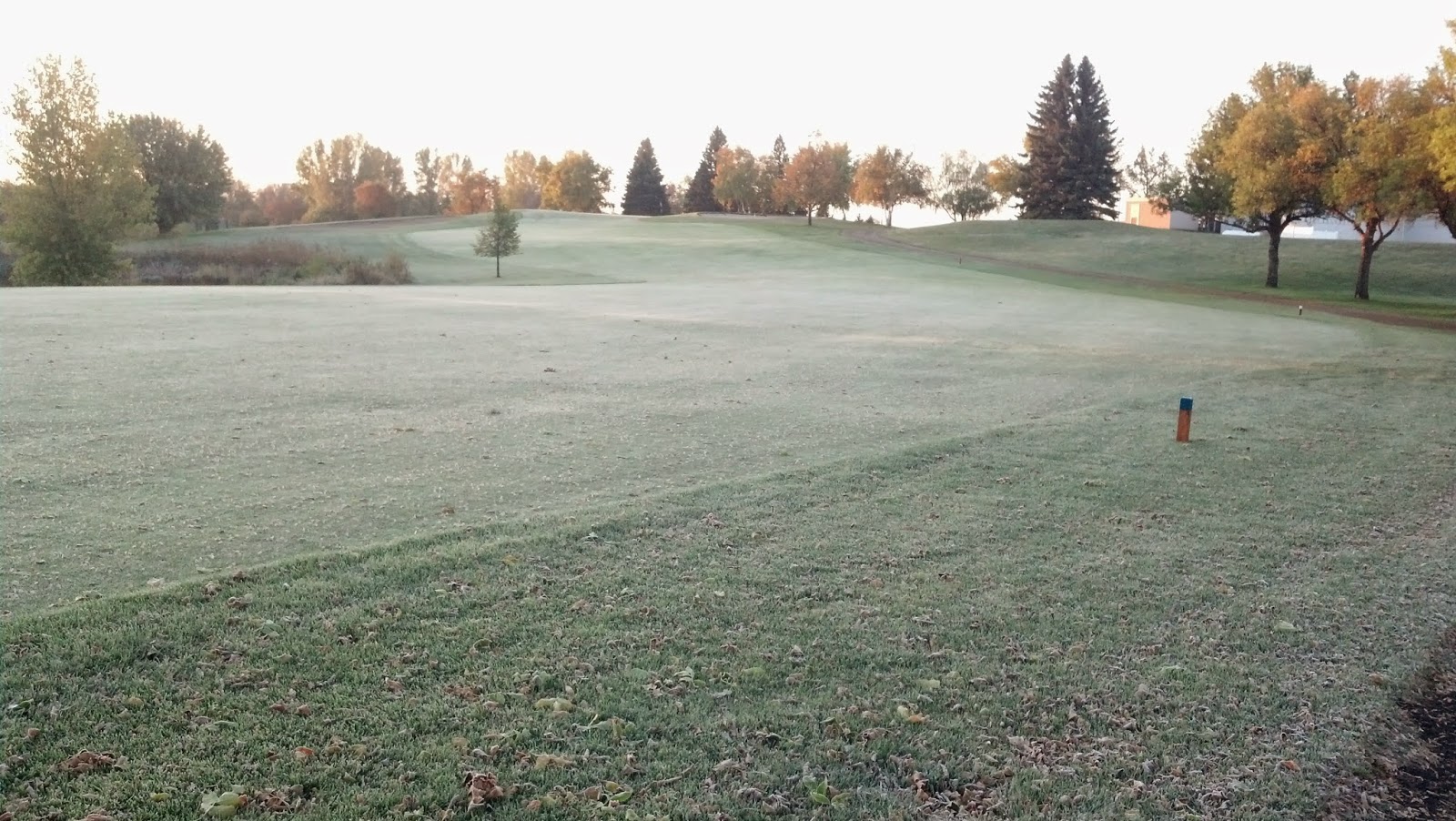With a low of 26 on both Wednesday and Thursday, the turf is officially done growing for the season. Combined with the short day lengths and cooler soil temperatures, the grass plants are now well into their descent into dormancy in preparation for the long winter ahead. We try our best to help the turf in that process by raising the mowing height and reducing the mowing frequency this time of year. Doing this allows the plant to produce more leaf surface which in turn increases its photosynthesis capacity, which is much more important this time of year with the shorter days and lower sun angles (less sunlight). Now that the turf is headed into dormancy, almost all of the carbohydrates it produces through photosynthesis will be directed straight to the roots in order to be used as food during the winter. At this point in the fall, we will see almost no top growth of the grass, which means we essentially are done mowing.
In the turf management business, we are the only "farmers" crazy enough to grow a perennial crop that lives through a North Dakota winter (with the exception of a small amount of winter wheat). Everyone else gets to harvest their crop in the fall and plant it again in the spring, but we don't have that luxury with turf.
 |
| A very white and frozen start to the day on Wednesday morning. The staff wasn't able to start doing anything on the course until almost 10:00am. |
 |
| A close up of a very heavy frost on one of our bentgrass tees |
 |
| The fairways are now being mowed only once a week. We realistically only have 3 or 4 mowings left to do this season on the fairways. |
 |
| No need to worry here, this interesting color scheme is completely natural and normal, and actually kind of cool. |

No comments:
Post a Comment